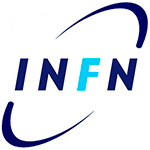PhD student Massimo Giacomin
In-Field Comparison between G.652 and G.655 Optical Fibers for Polarization-Based Quantum Key Distribution
Quantum Key Distribution (QKD) is a quantum communication protocol that allows users to distill a secret key with unconditional security. The importance of this technology is highlighted by recent breakthroughs in quantum computing, that is becoming a threat for classical cryptographic infrastructures. Furthermore, QKD is the first quantum communication protocol to have reached industrialization and commercialization. This has resulted in various national and international efforts that have encouraged the implementation of QKD systems in our telecommunications networks. Two of the most commonly exploited optical fibers widely implemented in telecommunications are the standards ITU-T G.652 and ITU-T G.655. Both fiber types support single-mode operations for the 1310 nm and 1550 nm bands, making them suitable for long-haul links. The main difference between the two lies in their dispersion properties. G.652 fibers are optimized for the 1310 nm band as they have zero dispersion at this wavelength. In contrast, G.655 fibers are more appropriate for the 1550 nm wavelength region due to their reduced dispersion value in the C-band (1530-1660 nm). G.655 fibers are better suited for scenarios where controlling the launch conditions is challenging, such as in long-distance or undersea communications and can also be easily implemented with Erbium Doped Fiber Amplifiers (EDFA), making them adequate for Wavelength Division Multiplexing (WDM) communication systems. To our knowledge, no direct comparison between the performance of G.652 and G.655 fibers for QKD applications with polarization encoding has yet been made. Our study is of interest to the QKD community, as both standards are widely employed in telecommunications networks. We report the results of a QKD field-trial exploiting both standards deployed between two urban centers in the Veneto region of Italy. The QKD system used in the trial was made of commercial devices that implement the BB84 protocol exploiting polarization encoding. We performed a 24-hour trial in both ``dark-fiber'' and coexistance configurations. We tested the co-propagation and counter-propagation schemes, demonstrating the feasibility of these configurations when real optical fibers in urban environment are used. The overall QKD performance in both fiber standards can be assumed to be excellent, especially when considering that they were obtained from deployed fibers used for day-to-day telecommunications between the Venezia - Mestre and Treviso POPs. References: 1. C. Agnesi, M. Giacomin, et al., “In-Field Comparison between G.652 and G.655 Optical Fibers for Polarization-Based Quantum Key Distribution”, https://doi.org/10.48550/arXiv.2312.04203, (2023). 2. C. Bennett and G. Brassard, “Quantum cryptography: Public key distribution and coin tossing”, Theor. Comput. Sci., 560, 20355177 (1984) Funding: M.G.’s PhD scholarship was co-funded by Telebit S.p.A. and MIUR (Ministerial Decree 352/2022), partially by QUID GA 101091408.





